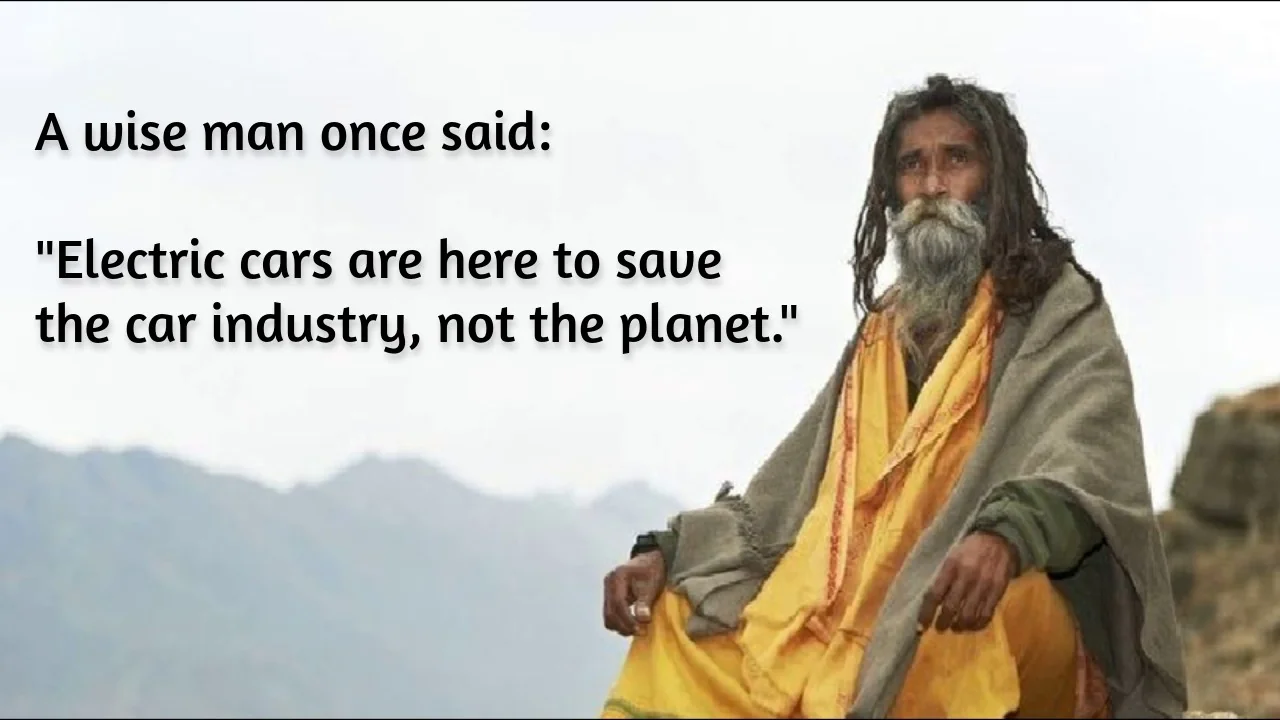Fuck Cars
A place to discuss problems of car centric infrastructure or how it hurts us all. Let's explore the bad world of Cars!
Rules
1. Be Civil
You may not agree on ideas, but please do not be needlessly rude or insulting to other people in this community.
2. No hate speech
Don't discriminate or disparage people on the basis of sex, gender, race, ethnicity, nationality, religion, or sexuality.
3. Don't harass people
Don't follow people you disagree with into multiple threads or into PMs to insult, disparage, or otherwise attack them. And certainly don't doxx any non-public figures.
4. Stay on topic
This community is about cars, their externalities in society, car-dependency, and solutions to these.
5. No reposts
Do not repost content that has already been posted in this community.
Moderator discretion will be used to judge reports with regard to the above rules.
Posting Guidelines
In the absence of a flair system on lemmy yet, let’s try to make it easier to scan through posts by type in here by using tags:
- [meta] for discussions/suggestions about this community itself
- [article] for news articles
- [blog] for any blog-style content
- [video] for video resources
- [academic] for academic studies and sources
- [discussion] for text post questions, rants, and/or discussions
- [meme] for memes
- [image] for any non-meme images
- [misc] for anything that doesn’t fall cleanly into any of the other categories
Recommended communities:
view the rest of the comments

Well, tbf, both trains and cars require converters (i.e. inverters like variable frequency drives or VFDs; or rectifiers) to match power between the local electric supply and traction motors, in the case of trains, or between the battery and traction motors, in the case of cars.
You need to be able to ramp up or down voltage or current (or both) depending on the drawing load that the motor sees at each and every moment of a trip (cars and trains). Then there is the possibility of your train jumping between different electric systems along its route, and so you need to have a way to accommodate those difference if you want to serve the most amount of passengers.
There are Battery Electric Multiple Units (BEMUs), too, out in the wild today that incorporate batteries in addition to electric service on trains (or just batteries alone), mostly in Japan and some in Europe. These are in the minority though compared to electric-supplied units.
Interestingly, there are some projects, most notably in Germany, where overhead lines are being introduced to trucks, fuzzying the differences in transportation modes even more.
I still get your point about the conversions, though. Batteries don't have 100% Coulombic/Faraday efficiencies, meaning that they don't charge up from 0-100% every charge cycle: you might start at 0-100%, but the next charge cycle might be 0-99.9999%, then 0-99.99%, then 0-99%, etc. This efficiency loss isn't as great as the other losses you might find in the converters previously mentioned, or other resistive losses such as via Eddy currents in the motors/axles, demagnetization of the motors, etc.
A better description of these processes would be:
Non-BEMU Trains: power lines -> converter -> electric motor (acceleration)
Non-BEMU Trains: electric motor -> converter -> power lines (deceleration)
Cars/BEMUs: power lines -> converter -> [battery -> converter -> electric motor] (charging [acceleration])
Cars/BEMUs: [electric motor -> converter -> battery] -> converter -> power lines ([deceleration] discharging)
Totally. And trains that add batteries onboard can reduce the advantage that non-battery EMUs have, moreso resembling locomotives with big diesel engines and fuel tanks. I still find BEMUs better though because you can run the trains as married units, just like EMUs (and I suppose DMUs), but batteries can also be distributed along the rolling stock to allow for greater weight balancing. Idk if the major manufacturers like Siemens or General Electric have plans to design systems this way, but greater adoption may lead to more varied designs.
Hope this helps the discussion!
Totally! My idea was that -> arrows represent the converters and to put it simply more arrows = more efficiency loss. But right, since power can also be injected back into the network, which is a good thing, there could be <-> arrows, or maybe <=> to better hightlight the bi-directionality:
power lines <=> electric motor
Since you mentioned putting power back into the grid:
I heard another potential use for car batteries would be using them to balance out local power fluctuations in the grid to make it more stable. Since cars stand still most of their life anyway, they might as well be connected to the grid whenever they're parked. Not as a big energy reserve, since that wouldn't be very efficient and capacity would be too low, but just to keep things more balanced which is a healthy thing for the power network. I suppose that also applies for train batteries.
Nissan has already started rolling out Vehicle-to-Grid (V2G) or Vehicle-to-X (V2X) chargers for its offering of vehicles since 2022, so it's already happening.
Chris Nelder, who runs the Energy Transition Show podcast and who is a member of the Rocky Mountain Institute, published a paper even as far back as 2016 arguing how the potential for the US consumer rolling stock of BEVs (Battery Electric Vehicles; grid + batteries only) and PHEVs (Plug-in Hybrid Electric Vehicles; grid + batteries + gas) offering Demand Response services to utilities is enormous.
I'm not sure about the V2G compatibility of BEMUs feeding energy back to the grid to serve Demand Response is where the industry is going currently, instead favoring the implementation of overhead line islands as compared to extensive grid rollouts, but that reality is 100% feasible. The island approach I believe is also what Siemens is aiming for with the overhead-fed trucking solution I shared earlier.
Still exciting nonetheless!!!